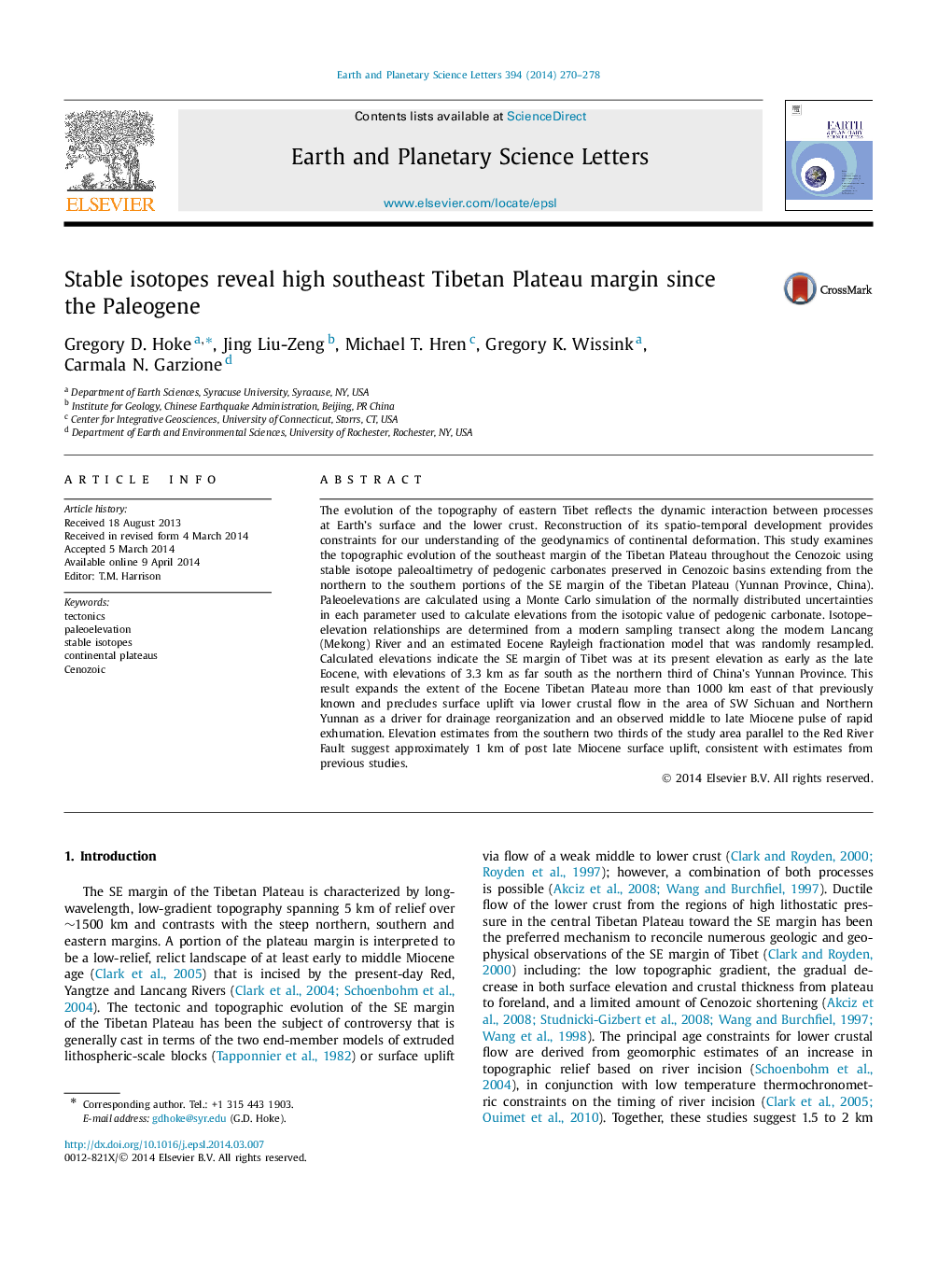| کد مقاله | کد نشریه | سال انتشار | مقاله انگلیسی | نسخه تمام متن |
|---|---|---|---|---|
| 6429422 | 1634762 | 2014 | 9 صفحه PDF | دانلود رایگان |
- Lower crustal flow in the Miocene did not elevate SE Tibet.
- SE Tibet has been at or near present elevations since Eocene.
- Late Miocene-Pliocene Surface uplift of the southernmost SE Plateau margin is â¼1 km.
- Lower crustal flow induced surface uplift cannot explain regional captures.
The evolution of the topography of eastern Tibet reflects the dynamic interaction between processes at Earth's surface and the lower crust. Reconstruction of its spatio-temporal development provides constraints for our understanding of the geodynamics of continental deformation. This study examines the topographic evolution of the southeast margin of the Tibetan Plateau throughout the Cenozoic using stable isotope paleoaltimetry of pedogenic carbonates preserved in Cenozoic basins extending from the northern to the southern portions of the SE margin of the Tibetan Plateau (Yunnan Province, China). Paleoelevations are calculated using a Monte Carlo simulation of the normally distributed uncertainties in each parameter used to calculate elevations from the isotopic value of pedogenic carbonate. Isotope-elevation relationships are determined from a modern sampling transect along the modern Lancang (Mekong) River and an estimated Eocene Rayleigh fractionation model that was randomly resampled. Calculated elevations indicate the SE margin of Tibet was at its present elevation as early as the late Eocene, with elevations of 3.3 km as far south as the northern third of China's Yunnan Province. This result expands the extent of the Eocene Tibetan Plateau more than 1000 km east of that previously known and precludes surface uplift via lower crustal flow in the area of SW Sichuan and Northern Yunnan as a driver for drainage reorganization and an observed middle to late Miocene pulse of rapid exhumation. Elevation estimates from the southern two thirds of the study area parallel to the Red River Fault suggest approximately 1 km of post late Miocene surface uplift, consistent with estimates from previous studies.
Journal: Earth and Planetary Science Letters - Volume 394, 15 May 2014, Pages 270-278
